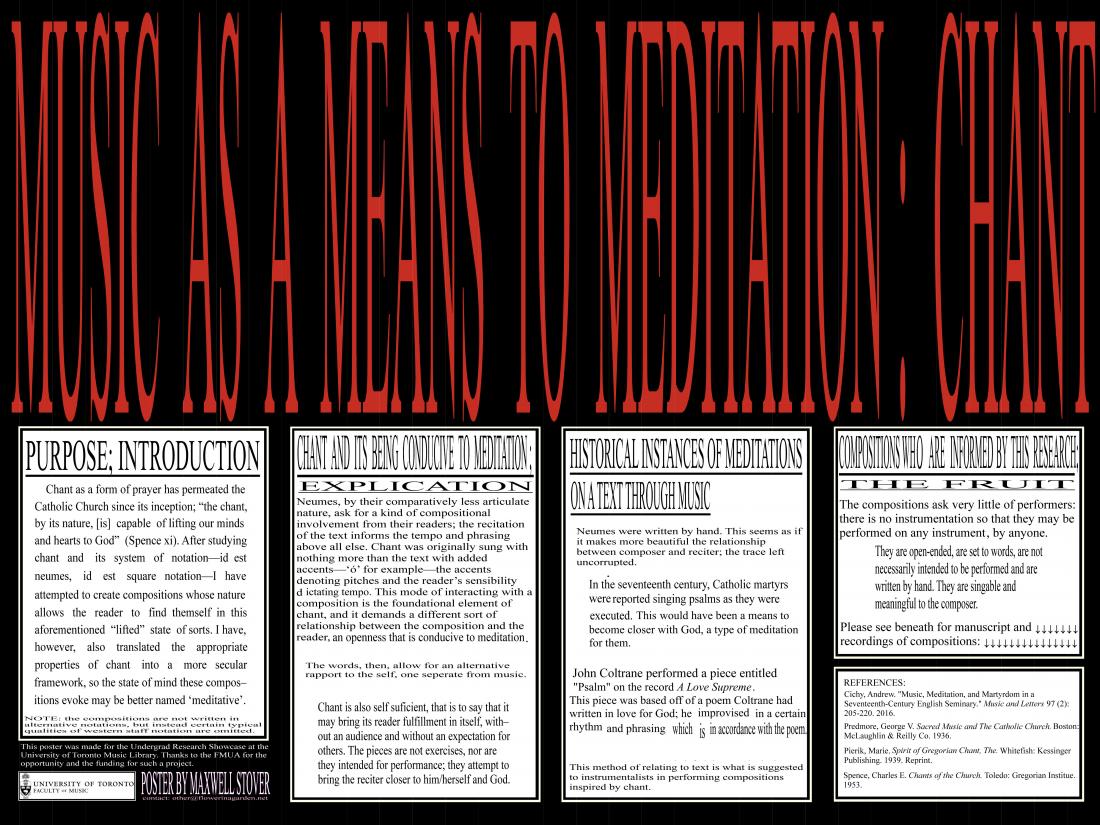
Monophonic Chant, Neume, and Contemporary Composition
I have been researching neume, also understood as square notation, to inform my compositions and the manner in which they are presented so to yield different results in interpretation of monophonic pieces, especially ones with accompanying text.
The manner in which neume presents music—by means of illuminated manuscript, color, and extreme levels of detail and stylisation in the texts—is wildly different from our modern conception of notation, which presents pieces often in static, computer generated formats, ones which perhaps disservice the music and its meanings. Neume was presented in such ornamented fashions for many reasons, but perhaps most importantly it was so to show the immense love for God the songs and their texts carried.